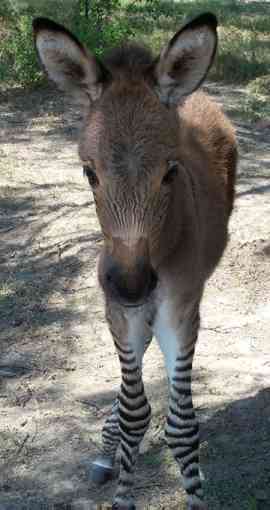Donkey Facts
 A male donkey is called a jack.
A male donkey is called a jack.- A female donkey is called a jennet or jenny.
- When a female horse and a male donkey mate, the resulting offspring is called a ‘mule’.
- When a male horse and a female donkey mate, the offspring is called a ‘hinny’.
- When a male zebra and a female donkey mate the offspring is called a ‘zedonk’ or ‘zebrass’.
- All of these resulting offspring are sterile, i.e. they cannot produce offspring themselves.
- Donkey’s milk was once valued as a medicine and was given to premature babies, sick children and to people suffering from tuberculosis. Donkey’s milk contains more sugar and protein than cow’s milk and less fat.
- In Southern Spain there is a ‘giant’ pure breed of donkey called the ‘Andalusian-Cordobesa’, which can reach up to 16 hands high, that’s as big as a racehorse! The estimated number of Andalusian donkeys in 2013 was 400 to 500. A healthy population would be about 700.
- Donkeys were first domesticated around 4500 years ago and, at one time were a status symbol of their owners’ wealth, rather like a Rolls Royce is today.
- The donkey’s characteristic ‘Eee awe’ sound is made by an intake of breadth followed instantly by exhalation.
